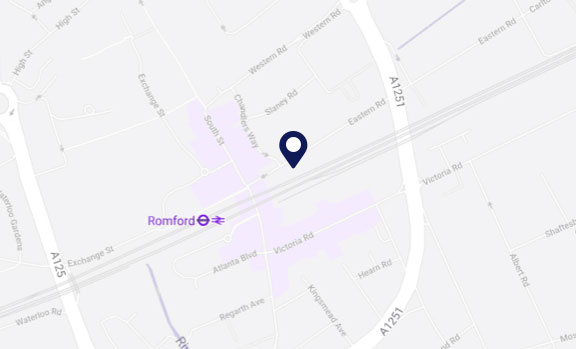Proprietary Estoppel: Definition, Meaning, Examples.
What is proprietary estoppel and how to claim?
Definition of proprietary estoppel
Proprietary estoppel is a legal remedy that may be used in some circumstances to prevent a landowner who made a promise or statement to someone that part or all of the property would be transferred to them in the future, from later reneging on that promise.
1. A proprietary estoppel claim arises when the following conditions are met:
There must be an assurance made in relation to specific land
In other words a promise is made to the claimant. The assurance must be sufficiently clear and unequivocal. The promise can take a number of different forms. It must be more than a statement of current intention. Evidence will be key, in particular evidence from a third party with no interest in the matter that a verbal promise was made.
2. The promise must relied upon by the claimant
The courts will consider to what extent the claimant has relied on the promise being fulfilled. They will expect the claimant to have made significant life choices based on the promise. This could include moving to a property close to the land they believed they were set to own, or turning down more lucrative job opportunities to become a full time carer, working on a farm for an entire career with little or no pay, rather finding a job for which wages will be paid.
3. Reliance on the promise has caused the claimant to suffer detriment.
The claimant must be able to demonstrate that they acted to their detriment. Generally, this means financially but this can come in many different forms, it is likely that this will be of financial detriment but can include many types of detriment. Examples can include working long hours for little to no pay; or the inability to enter into an alternative career or job. The Courts, however, will have regard to any benefits received in assessing detriment, such as free accommodation.
An estoppel claim could arise where, for example, a father promises to his son that he will give him the family farm and, relying on that promise, the son works on the farm for many years on a low wage. If the father does not subsequently transfer the farm to his son, his son could have an estoppel claim against his father (or his father’s estate).
Where all the elements of the claim are proved the court will consider whether it is unconscionable for the representor to go back on the assurance and whether fairness demands remedy and if so what that remedy should be.
Elements of a Proprietary Estoppel Claim
Overview of the elements of a proprietary estoppel claim
To claim proprietary estoppel, it’s necessary to show:
- a clear promise or assurance has been made
- the promise or assurance was relied on
- a reasonable reliance on the assurance or promise caused the claimant to suffer detriment
Promises or assurances
What is meant by a ‘promise’ in a proprietary estoppel claims? There must be an assurance made. The assurance can take a number of forms ranging from express representation to passive encouragement. However the assurance must be sufficiently clear and unequivocal. In many cases the assurance will not be so clear. It may be possible to rely on conduct to constitute an assurance.
An assurance may be given over a period of time, leading the claimant to believe they will receive property, land or a business. The court will hear evidence about how the promise or assurance came about, and the context in which it was made.
Detrimental reliance
The claimant must be able to demonstrate that they acted to their detriment.
Unconscionable conduct
Proprietary estoppel prevents someone from relying on certain facts or rights which are different to earlier ones – to the detriment of someone else. The law says this is unconscionable behaviour.
Remedies Available for Proprietary Estoppel Claims
Overview of the remedies available for proprietary estoppel claims
The remedy available for proprietary estoppel would be to give effect of the promise. This would be the expectation of land or making an award of money. The court can step in to consider making an award if a decision cannot be reached.
The court must reflect the minimum equity to do justice to the claimant.
Proprietary Estoppel vs Constructive Trust
What is the difference between a constructive trust and proprietary estoppel?
A common intention constructive trust is essentially imposed on grounds of a bargain between a claimant and a defendant whereas a claim for estoppel is based on some assurance given by the legal owner to a claimant on which the claimant has relied.
The two doctrines are very similar, as both concern the courts powers to intervene to prevent unfairness or unconscionable conduct.
In order to succeed with a constructive trust claim, a claimant must demonstrate, first, a common intention with the legal owner that they should have a beneficial interest in the property, the common intention to be established by evidence of an express agreement or to be inferred from the parties’ conduct. Second, the claimant must show that they acted to their detriment on the basis of that common intention; such that it would be inequitable for the legal owner to deny the claimant’s interest
This can be when another person has wrongfully or unfairly received assets, known as “unjust enrichment”, or, for instance, where the common intention between two or more parties is not reflected by the legal ownership of an asset. That is particularly common in the context of the family home.
Unjust enrichment could arise if one person has received property belonging to another for which they have not paid anything.
A constructive trust can arise, for example, where the parties live together in a property owned by one party in their sole name but subject to a mortgage in both names or where both parties contributed to the mortgage payments.
Another difference lies in the remedies that are given in each cases. If the asset is determined to be held as subject to a constructive trust that asset must be returned to the claimant.
Problems with Proprietary Estoppel
Overview of the problems with proprietary estoppel
Proprietary estoppel cases can be very contentious, significantly costly, and time consuming. If you are successful in your case, the losing party will be responsible for covering the costs of the winning party. However, based on your circumstances we may ask you to consider alternative dispute resolution if we think it will achieve a better outcome for your case.
Contested Wills Enquiry
Fill out the form and a member of our team will get in touch to discuss how we can help.
Mullis & Peake will use the information you provide in this form in accordance with our privacy policy. With your consent, we may from time to time send you general updates by email or post that we think you will find of interest.This includes notification of upcoming event and updates or alerts containing relevant legal news. You can update your preferences at any time and will be able to easily unsubscribe from anything that you do not wish to receive.
Importance of proprietary estoppel in land law
Proprietary estoppel is significant as its purpose is provide a person with land rights that they believed where already theirs, based on another party. A claim for proprietary estoppel could come to light if the other party has denied those rights to be the case.

When can you claim estoppel?
After a person's death if a Will does not reflect a promise made by the deceased before their death (such as a promise to transfer land or property), it may be possible to enforce a promise that is not subsequently fulfilled in a Will. This will need to be raised quickly after the Will has been read as with most disputed Wills cases.

Frequently asked questions
The aim of any remedy is to give effect to the promise (the expectation), rather than to compensate for the loss. Because proprietary estoppel is an equitable cause of action the remedy is flexible and discretionary. The remedies can range from an award of money to a beneficial interest in land.
The Court has very wide discretion in respect of the remedies that it can award when they find a claim proprietary estoppel is established. Each case will be considered upon its own particular facts and circumstances. Proportionality lies at the heart of the doctrine of proprietary estoppel. The aim is to prevent “unconscionable conduct”. The remedy will depend upon all circumstances and facts of the case, including a person’s expectation and the detriment suffered. The remedy need not always be financial. The final result must be a just one, having weighed up a person’s expectation against the actual detriment suffered.
Mullis & Peake have specialists in contested Wills ready to help you. Contact us online today or call us on 01708 784000.
Alternatively, request a call back to have one of our experts contact you at a time that suits.






















